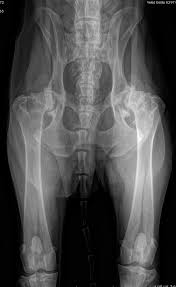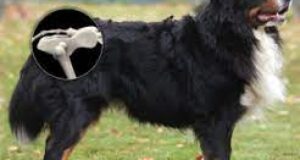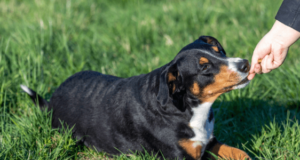Dog hip replacement is a complex but life-changing procedure for pets suffering from hip dysplasia or arthritis. Below are fifty sensitive issues with easy solutions, explained through metaphors, similes, and imagery to make them more relatable.

1-10: Pre-Surgery Concerns
- Diagnosis Delays – Like waiting too long to fix a leaking roof, delaying surgery worsens the damage. Solution: Get X-rays early.
- Choosing the Right Vet – Like picking a skilled pilot for a long flight. Solution: Find a specialist in orthopedic surgery.
- Age Concerns – Think of an old car; parts wear out differently. Solution: Vets assess fitness, not just age.
- Weight Issues – Like carrying a heavy backpack all day. Solution: Manage diet before surgery.
- Underlying Health Problems – A weak foundation can’t support a tall building. Solution: Treat infections or conditions beforehand.
- Cost Worries – Surgery is an investment, like fixing a home’s foundation. Solution: Consider pet insurance or financing plans.
- Surgical Risks – Like stormy weather before takeoff. Solution: Pre-op tests minimize complications.
- Pain Management – Think of numbing cream before an injection. Solution: Modern anesthesia keeps dogs comfortable.
- Emotional Stress for Owners – Like sending a child to surgery. Solution: Trust the process and stay informed.
- Finding a Support System – Recovery is easier with help, like teamwork in sports. Solution: Involve family and pet sitters.
11-20: Surgery-Related Issues
- Type of Implant – Like choosing metal braces or Invisalign. Solution: The vet picks based on the dog’s needs.
- Surgery Duration – A marathon, not a sprint. Solution: Expect a few hours under expert care.
- Anesthesia Concerns – Like putting a phone on sleep mode. Solution: Modern methods are safe.
- Unexpected Complications – Like potholes on a road trip. Solution: Surgeons are trained to handle them.
- Surgical Infection Risks – Like a cut getting infected if left dirty. Solution: Sterile environments prevent this.
- Bleeding Risks – Like a tap that won’t fully close. Solution: Blood clotting tests are done first.
- Nerve Damage Worries – Like accidentally cutting the wrong wire. Solution: Surgeons work with precision.
- Hip Alignment Accuracy – Like setting a car’s wheel alignment. Solution: Modern tools ensure precision.
- Bone Cement vs. Cementless Implant – Like choosing glue or screws for furniture. Solution: The vet selects the best option.
- Reaction to Materials – Like a person allergic to nickel. Solution: Vets use biocompatible implants.
21-30: Post-Surgery Concerns
- Immediate Pain – Like waking up sore after the gym. Solution: Pain meds manage discomfort.
- Swelling and Bruising – Like a sprained ankle. Solution: Ice packs and rest help.
- Walking Difficulties – Like learning to walk after a cast is removed. Solution: Gradual therapy rebuilds strength.
- Risk of Infection – Like a fresh wound getting dirt in it. Solution: Keep the area clean.
- Wound Opening – Like a loose button on a shirt. Solution: Use an e-collar to prevent licking.
- Appetite Loss – Like a child refusing food after sickness. Solution: Tempting food and vet guidance help.
- Limping After Surgery – Like breaking in new shoes. Solution: It resolves with therapy.
- Scar Tissue Formation – Like glue hardening over time. Solution: Massage and therapy prevent stiffness.
- Leg Length Discrepancy – Like wearing uneven shoes. Solution: Therapy and time adjust posture.
- Hip Dislocation Risks – Like a door coming off its hinges. Solution: Controlled movement and harness use.

31-40: Long-Term Recovery
- Physical Therapy Commitment – Like gym workouts for a weak back. Solution: Follow vet-recommended exercises.
- Avoiding Stairs Too Soon – Like preventing a toddler from climbing. Solution: Use ramps and barriers.
- Muscle Atrophy – Like a broken arm losing muscle in a cast. Solution: Gradual strength-building exercises.
- Hydrotherapy Benefits – Like astronauts training in water. Solution: Swimming strengthens muscles gently.
- Weight Management – Like carrying extra weight in a backpack. Solution: Control diet and exercise.
- Behavioral Changes – Like regaining confidence after an injury. Solution: Patience and positive reinforcement.
- Cold Weather Sensitivity – Like an old knee injury aching in winter. Solution: Keep your dog warm.
- Joint Supplements – Like adding oil to a rusty machine. Solution: Use glucosamine and omega-3.
- Long-Term Medications – Like managing high blood pressure. Solution: Follow vet instructions on anti-inflammatory meds.
- Monitoring for Complications – Like regular car maintenance. Solution: Schedule check-ups.
41-50: Quality of Life After Surgery
- Returning to Normal Play – Like resuming sports after rehab. Solution: Gradual reintroduction.
- Jumping Limitations – Like an athlete with knee surgery. Solution: Modify activities.
- Running Again – Like regaining sprint speed post-injury. Solution: Controlled increases in speed.
- Avoiding Future Joint Problems – Like preventing cavities with good habits. Solution: Keep joints healthy with movement.
- Living with a Bionic Hip – Like a cyborg with a strong metal limb. Solution: Dogs adapt surprisingly well.
- Longevity and Quality of Life – Like a car running smoothly with good maintenance. Solution: Keep up with care.
- Travel Considerations – Like adjusting for a wheelchair-bound traveler. Solution: Ensure comfort and safety.
- Aging with a Replaced Hip – Like a senior using a prosthetic leg. Solution: Monitor for wear and tear.
- Socializing Post-Surgery – Like rejoining friends after recovery. Solution: Gradual interactions.
- Owner’s Peace of Mind – Like knowing a loved one is healthy again. Solution: Enjoy a happier, pain-free dog!
With proper planning, dog hip replacement is like giving a rusted bicycle a brand-new wheel—it transforms mobility and life quality.




